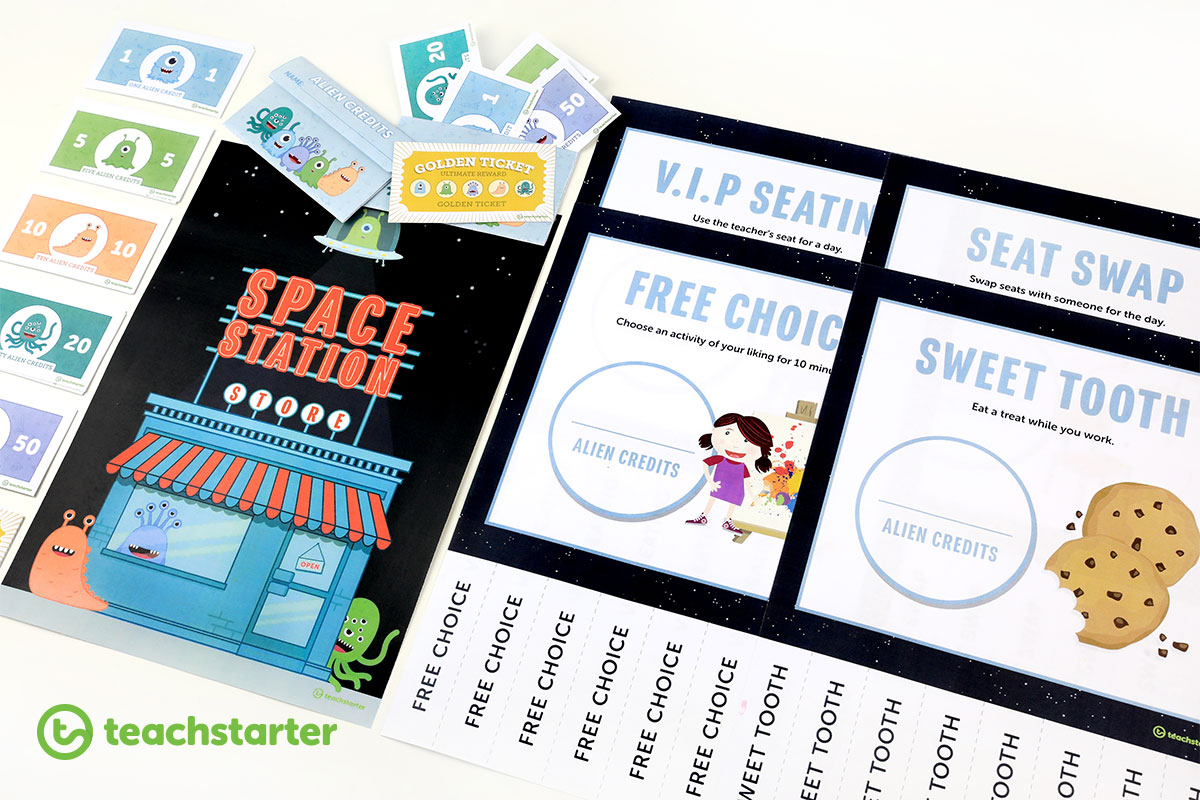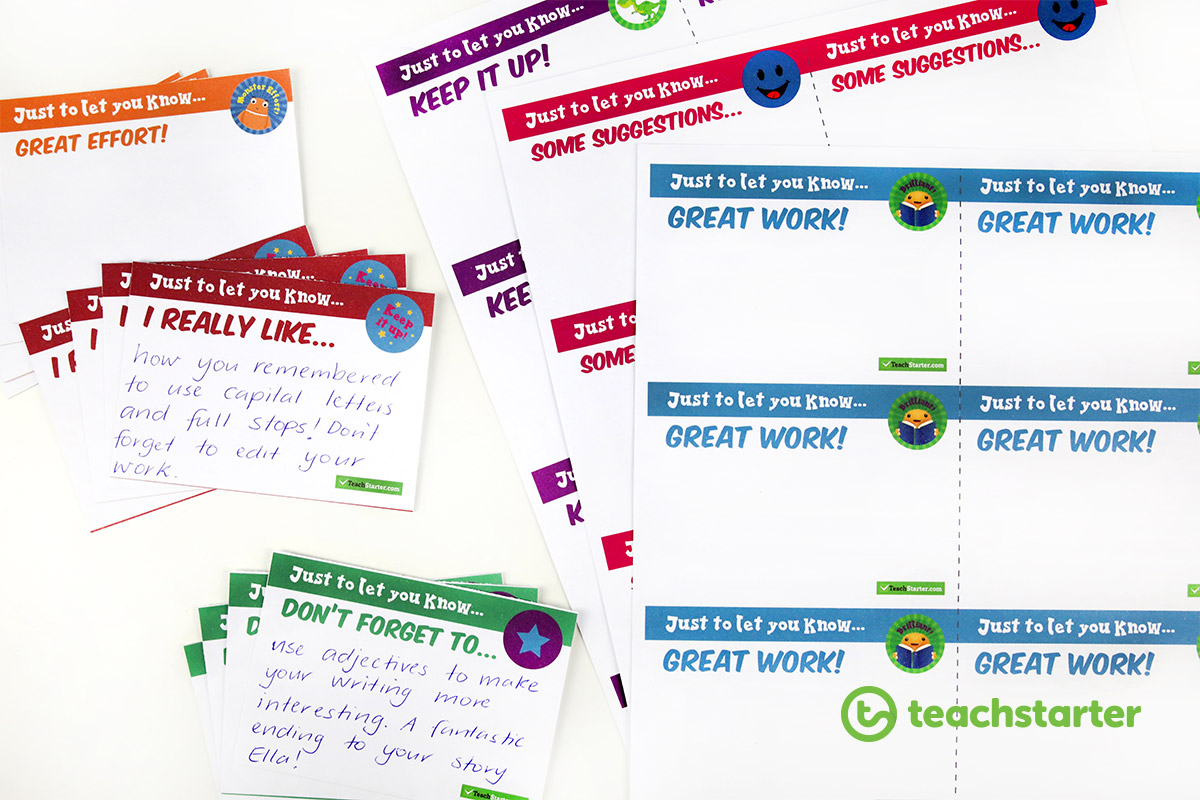Encouraging intrinsic motivation, resilience and independence. These are a few of the golden markers of teacher “success” that we so often hold ourselves up against. They form yet another set of skills we need to help develop in our students, along with literacy and numeracy skills, inquiry and critical thinking skills, social skills, creativity and so on and so forth. Whoa! Teaching small humans really is everything! But, there’s no need to stress… Rather than trying to fit explicit teaching of motivation and resilience into an already crowded curriculum, you can make the practice of these life-long skills an innate part of the day-to-day processes, activities and overall ‘vibe’ of your classroom.
“Intrinsic motivation? Of course!” you say most politely. “But, how do I foster this ‘I love learning!’ vibe in my classroom, huh?”
Should you set up an extrinsic classroom reward system? Or, should you be ditching prizes (a.k.a. extrinsic motivators) and simply remind students that the greatest reward is their new knowledge/new skill/being a good person, to which they will probably just roll their eyes?
Are Classroom Reward Systems Really That Bad?
In this post we’ll make it clear, so you can begin to figure out what kind of feedback and classroom reward systems are going to work best for your students.
After all, traditional classroom reward systems can have their place, but we want our students to really learn to love learning! And to be motivated by more than a strip of stickers that ‘earns’ them something from the prize box at the end of the week.
We want our students to be confident, intrinsically motivated and resilient learners, especially when faced with an area of exploration that is outside of their knowledge comfort zone! Here’s how to help them become just that…
How to Use a Classroom Reward System
Traditional classroom reward systems can be somewhat controversial. It’s true, there is evidence that suggests that while external rewards do provide short-term benefits and immediate results, studies have shown that this is outweighed by the longer term effects, such as a child being less likely to do the specific task unless they are given a reward.
However, all things in moderation, right? Classroom reward systems can be an important part of classroom management, increasing work ethic and helping students develop self-management skills. They are best used in conjunction with a range of other intrinsic and extrinsic motivators.
Classroom reward systems can be one small part in the mechanics of a positive learning environment.
Extrinsic rewards can be used with the aim of being phased out when the rest of your positive learning machine is strong enough to work on its own.
With that in mind, here are some hints and tips for implementing a classroom reward system with your students.
(1) Encourage student ownership of the reward system
Give your students the opportunity to develop the classroom reward system. They can brainstorm and vote on the types of behaviours and rewards that are used.
Our printable classroom reward systems contain ideas for different rewards, but ask your students! You may be surprised by how simple some of their most desired rewards can be!
(2) Give regular feedback on learning and behaviour to students and carers
Feedback about learning and behaviour should be frequent and early – establishing high expectations and providing consistent reminders of those expectations.
On the Spot
Don’t just rely on your external reward system, giving or taking away ‘credits’ and enforcing reward system-related punishments for good and bad behaviour or for when students meet a learning goal. Providing individual, small-group and whole class feedback is essential to creating a classroom environment that encourages the development of intrinsic motivation.
Between School and Home
You can simply send home little notes to parents on a semi-regular basis. Apps like Seesaw make giving frequent feedback a breeze! Take a look at our post, “How to Use the Seesaw App in the Classroom” for more information about this fantastic teaching tool.
Behavioural Feedback
When it comes to behavioural feedback, using an “I – Statement” is an effective way to deliver feedback without judgement. For example: “When you throw your books on the floor, I feel concerned that they might hit another student.”
For more on how and when to use feedback in the classroom, check out our blog post “Good Feeback and Intrinsic Motivation is the Key to Improvement”.
(3) Facilitate rich and engaging learning experiences
Open-ended, hands-on tasks are fantastic for fostering intrinsic motivation. Whenever possible, try moving away from traditional worksheets and ‘stand and deliver’ lessons. Provide students with hands-on, open-ended activities, try out an in-class flipped learning experience or even simply get outside for a change of scenery!
Students will develop an internal drive to succeed when:
- a high expectation from the teacher is set
- they are given challenging tasks
- they are engaging in learning that has real-life relevance
- information is delivered in an interesting way
- their individual learning goals are achievable and accomplished
- they have a sense of ownership of, and accountability for, their learning
- they see their teacher actively involved.
(4) Teach goal setting, monitoring and reflection
While visible learning goals and visual data trackers like ‘bump it up walls’ can seem unrelated to classroom reward systems, they are an important part of building a learning environment which fosters intrinsic motivation and commitment to learning.
Teach your students how to set goals and how to assess and monitor their progress through reflection. Support students as they learn to identify how frustrations and hurdles are born out of the challenges they face as they progress towards achieving their goals.
(5) Gradually fade out the use of extrinsic motivators
Classroom reward systems that work on a “more for good and less for bad” premise, or rely on physical ‘prizes’ can be scaled back as students begin to develop more intrinsic motivation.
“As we progress through the year, I increase the amount of work needed to earn the rewards, gradually phasing [the rewards] out altogether as the students begin to show responsibility for their own behavior and work ethic.
It also helps that they see the association between completing work, behaving, and getting good grades.” – Elementary Teacher, Kristina Campbell, Education World
Alternative Classroom ‘Reward’ Ideas
Throughout the process of fostering intrinsic motivation, you might also like to come up with some alternative classroom reward ideas.
- Create a “Wow Work” wall where students can proudly put their work on display. Encourage classroom visitors to check it out!
- Use individual student folios to help the students see their own progress and growth. For example, use manilla folders with clips for students to add a handwriting sample each week – at the end of each term, they can look back through their handwriting samples to see their progress. Students will love seeing how small improvements over time add up to bigger changes. It’s also such a wonderful way to encourage persistence!

- Add a “Wow Work” section to your weekly class newsletter. Here you could provide anecdotes about the great progress students are making, or include samples of student work.
- Have your students share their work with students in a buddy class. For example, you could pair your class up with an older grade and have your students share their writing and artworks, or talk about a science experiment they did and what they discovered! If you teach an upper primary class and know a high school teacher, see if you can organise to skype with their class for your students to present work, and then as the high school students give feedback and thanks to your students via video, email or even written letters and cards!









Comments